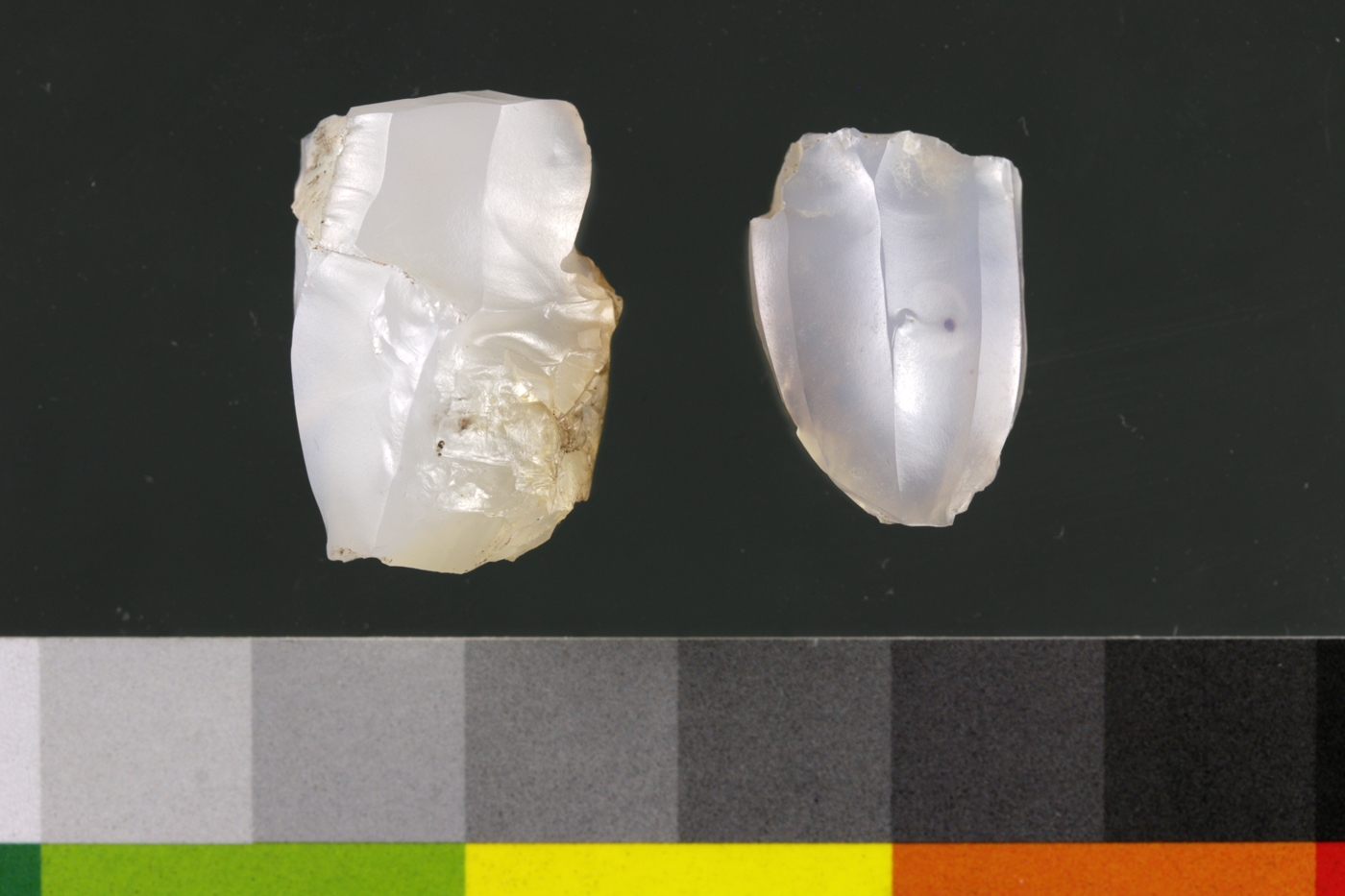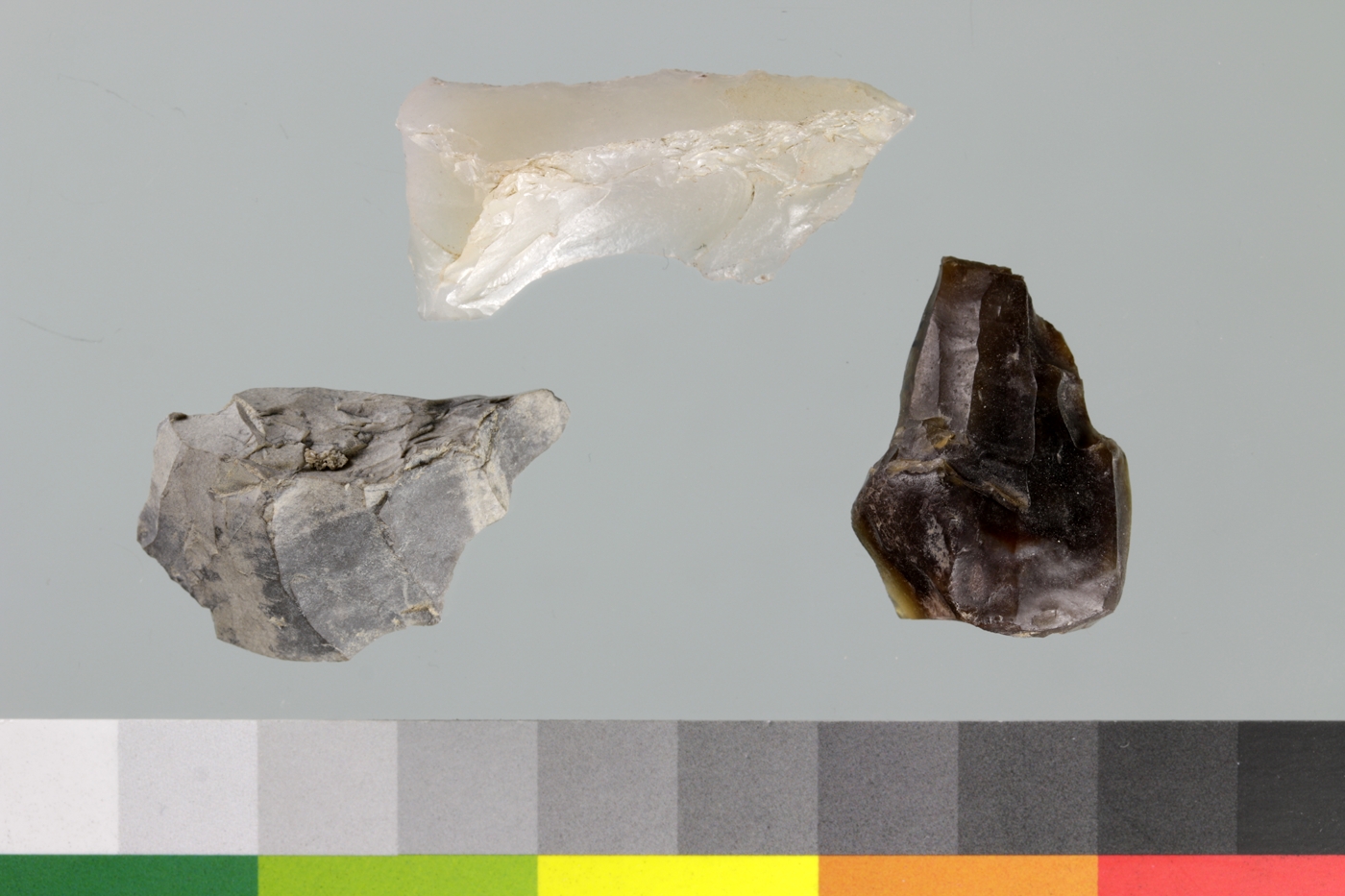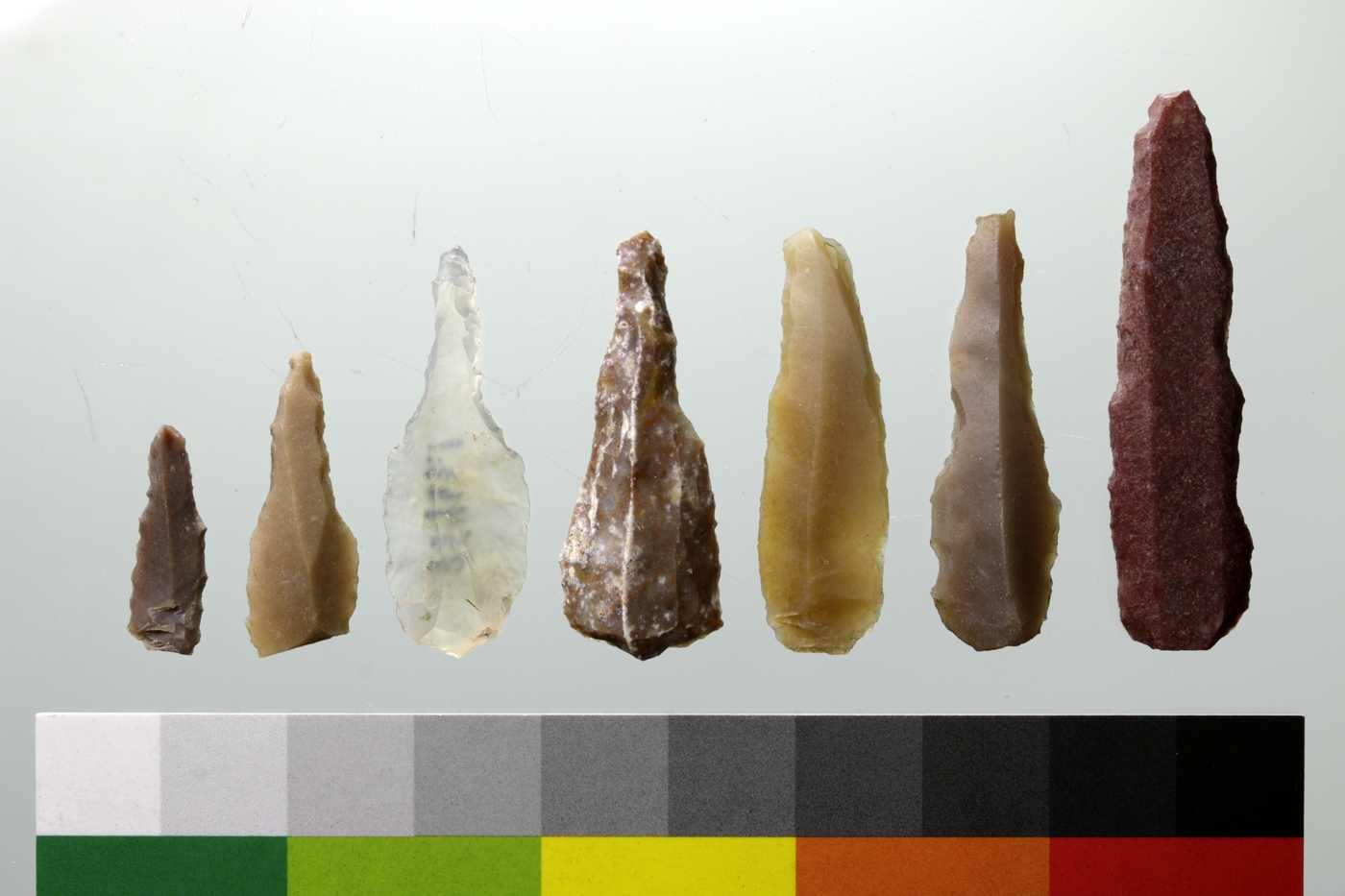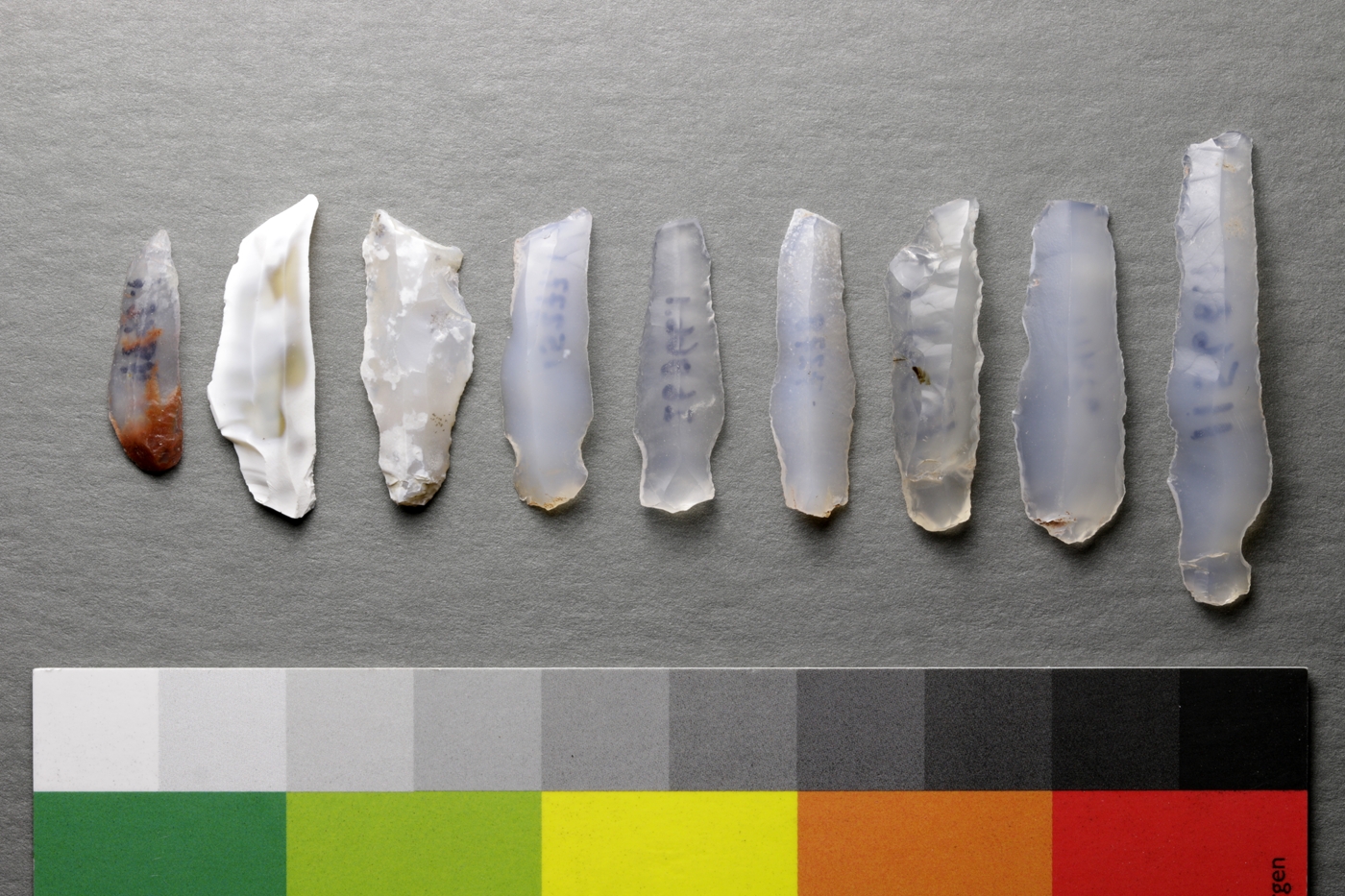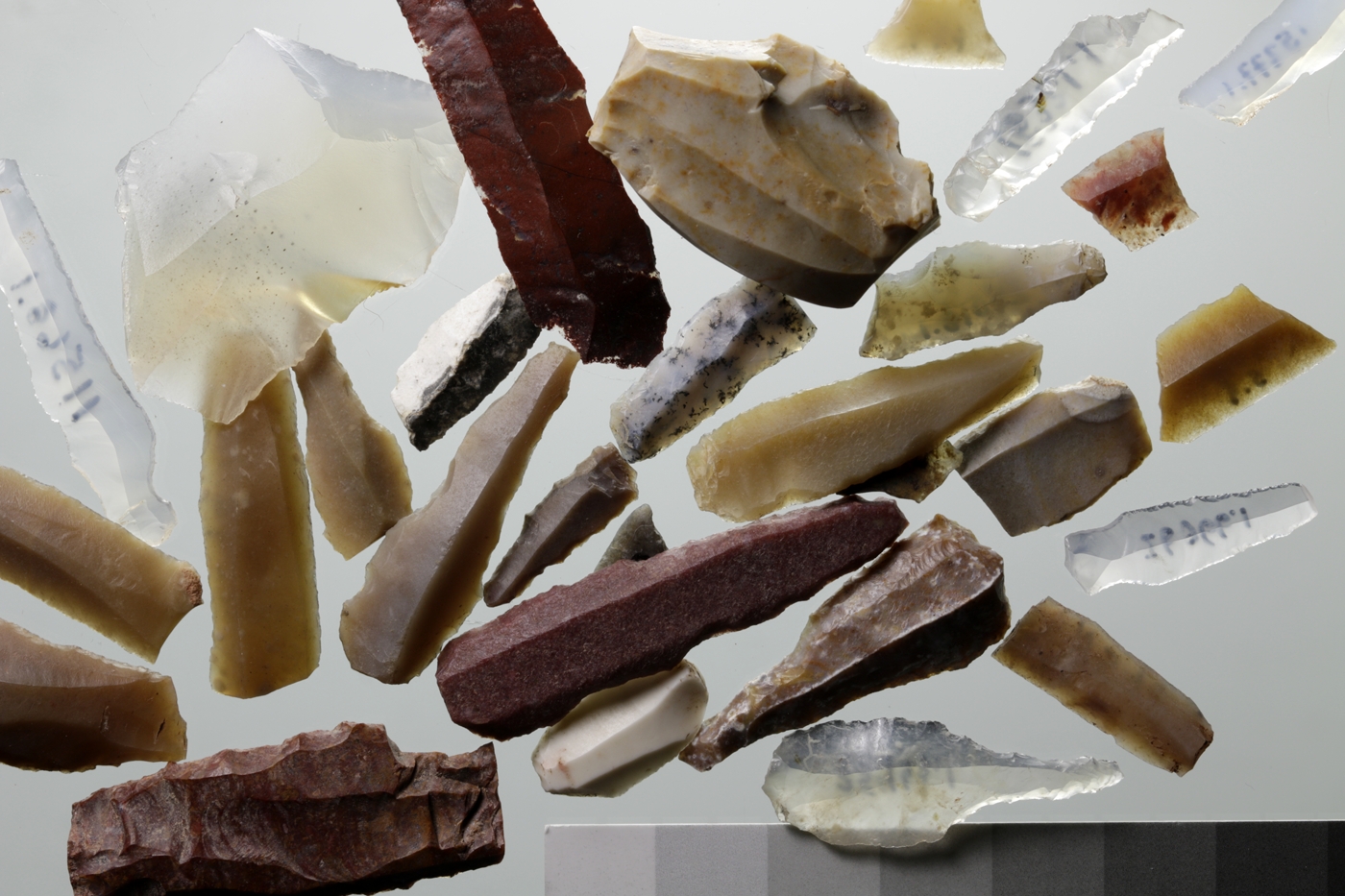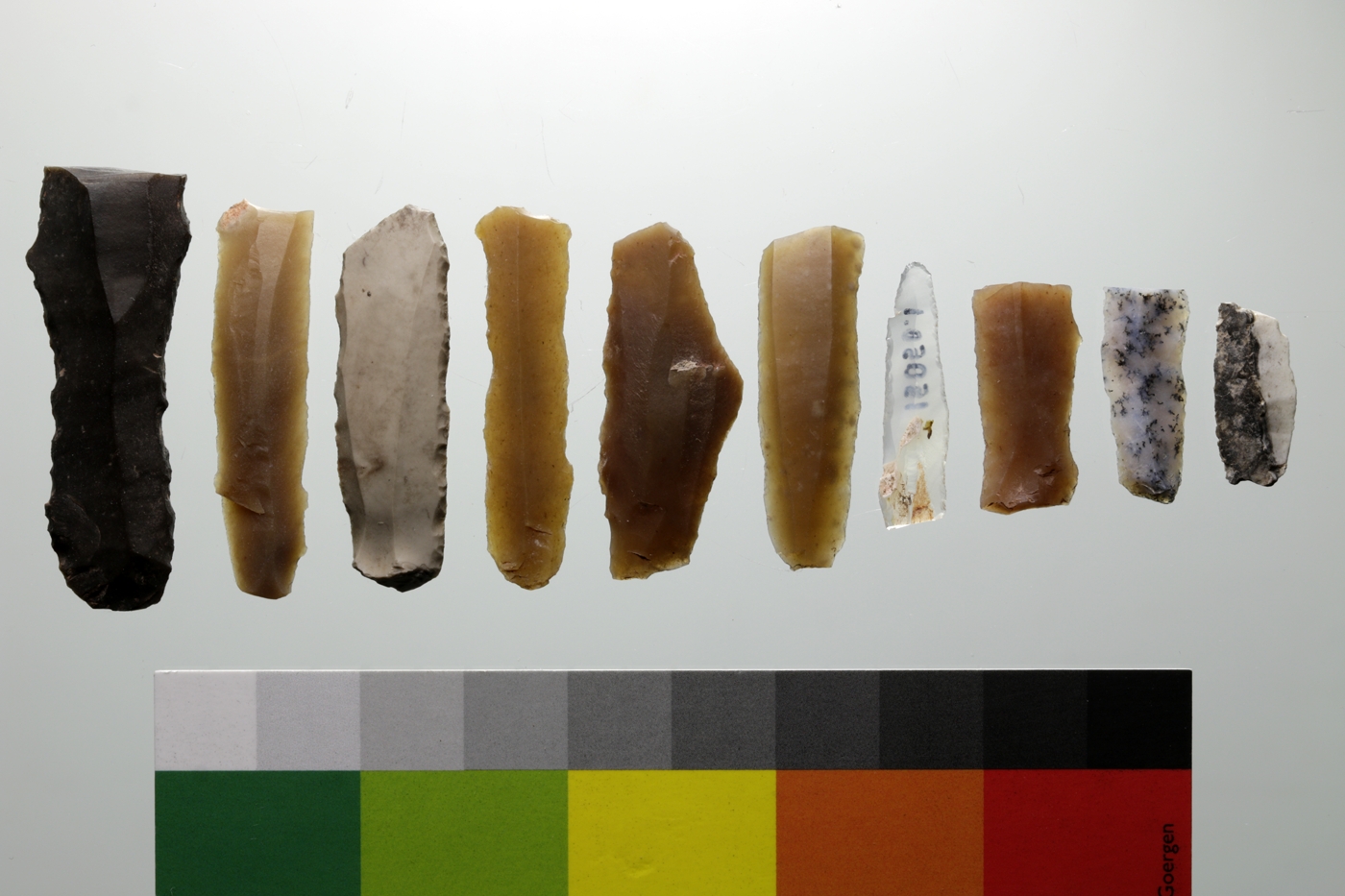Lithics
Chipped stone artifacts are one of the more common categories of finds at Monjukli Depe, with more than 4000 pieces recovered during the excavations.
The chipped stone artifacts were made of a variety of raw materials, of which the most common are a very fine translucent chalcedony that was probably acquired from Khorasan to the south of the Kopet Dag range, a medium-textured dark gray siltstone that was locally available, and a variety of cherts, ranging in texture from fine to medium and in color from tan to orange, red brown, white, and gray. The cherts were likely procured from somewhere outside the immediate region. Smaller quantities of coarser materials such as sandstone were also used.
Chalcedony and siltstone were used in very different ways, evident in the first instance in the size of debitage and tools made of these materials. Whereas chalcedony blades are rarely more than 3 cm in length, siltstone flakes are generally much larger and heavier.
The presence of substantial quantities of debitage attests to the reduction of cores at the site. Both blade and flake cores were found in most of the attested raw material groups. Core rejuvenation flakes, chunks, shatter, unused flakes, and varying amounts of cortex on pieces of debitage all point as well to the conclusion that many of the steps of chipped stone tool production took place in the village.
By far the majority of tools recovered at Monjukli Depe are retouched flakes and blades, with no modification of the initial blank but simple, shallow retouch along one or more edges. In addition, smaller numbers of tanged blades with retouched notches near the base that were probably used to facilitate hafting. Sickle blades, notched or denticulated flakes and blades, and perforators were also recognized. The overwhelming majority of tools were made of chalcedony or chert. Although relatively few pieces of siltstone were retouched to form tools, flakes with macroscopically visible traces of use attest to the use of siltstone artifacts in various tasks that did not involve modification of their edges.
Usewear studies were conducted by Dr. Melody Pope on a small sample of chipped stone tools and debitage. This work revealed that chipped stone tools were used in both manufacturing and subsistence activities. Non-food-related manufacturing tasks attested included the working of bone, perforating and scraping of processed hide, and cutting or slicing woody plants. Other tools were used in the reaping of cereals, butchery of animals, and possibly hunting. Many of the pieces examined had reached the end of their use life, judging by the extent of the wear on their edges.
For further reading, see Pollock et al. 2011.
